With extensive experience in executing heavy industrial equipment projects, PREBECC once again demonstrates its technical capabilities by successfully completing a maintenance and upgrade project for an industrial tank system at a major food processing plant in Vietnam in June 2025.
The scope of work included the refurbishment of a mixer tank, upgrades to two buffer tanks, and the fabrication of an automated exhaust hood system. Automation elements were also integrated to enhance operational efficiency and ensure hygienic standards in a food-grade production environment.
1. Scope of work
Despite a tight schedule, the project demanded high engineering precision and tailored technical solutions for aging equipment that had been in operation for many years. The primary objective was to extend the operational life of the system while improving automation, safety, and compliance with modern food industry standards.
The specific scope included:
- Maintenance of one 500L mixer tank (constructed from AISI 304 stainless steel);
- Upgrade of two buffer tanks, including structural enhancements and retrofitting to connect with a sanitary SMS-standard process piping system;
- Fabrication and installation of a new automated exhaust hood with a diameter of 1924mm, operated via pneumatic cylinder control.
2. Maintenance of the 500L Mixer Tank
The mixer tank is a critical component in the production line of food processing facilities. Responsible for blending liquid or viscous materials, it must ensure uniformity, sanitation, and safe performance throughout the operation.
For this project, PREBECC executed the following upgrades to the 500L mixer tank:
- Fabrication of additional support legs: The tank’s base structure was reinforced to enhance mechanical stability, minimize vibration, and ensure safe operation at higher speeds.
- Installation of a new AISI 304 stainless steel cover: This corrosion-resistant material ensures durability in humid and food-contact environments, while effectively preventing cross-contamination from external sources.
- Integration of a new mixing motor and impeller system: The outdated drive mechanism was replaced with a high-efficiency motor and impeller assembly, optimized for improved mixing torque, reduced power consumption, and enhanced blending performance.
This combination of mechanical upgrades (support structure and tank body) with dynamic improvements (motor and impeller) results in a more stable and reliable mixing system—ultimately improving product quality during the raw material pre-treatment phase.
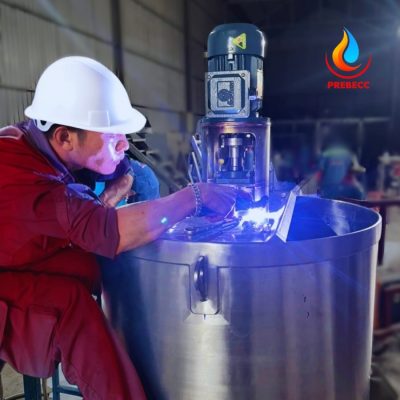
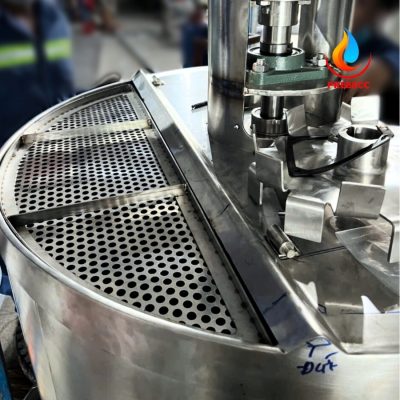
3. Buffer tank retrofit – Optimizing integration with Automated systems
In food production lines, the buffer tank functions as an intermediate storage point, regulating liquid flow between processing stages. Today’s requirements for buffer tanks go beyond storage capacity – seamless integration with hygienic piping systems in accordance with international standards is essential.
PREBECC implemented the following upgrades for two buffer tanks:
Redesigned and Fabricated new tank covers
The new covers ensure tight sealing and easy disassembly for cleaning and inspection. Fabricated from food-grade stainless steel (SUS 304), the design complies with hygienic standards in food processing.
Raised tank supports
The tanks were elevated to align with the hygienic pipeline network. This adjustment improves gravity drainage and facilitates integration with automated filling and recirculation systems.
Notably, PREBECC installed a complete new SMS-standard (Swedish Manufacturing Standard) hygienic piping system – recognized for its sanitary design, leak-proof connections, and ease of disassembly, especially in the food and pharmaceutical industries. All fittings, elbows, and valves are made from 316L stainless steel – a corrosion-resistant material suitable for mild acidic environments and CIP (Cleaning-in-Place) chemicals.
This retrofit enhances automation capability and lays the groundwork for fully integrated, closed-loop production lines, minimizing cross-contamination risks and reducing CIP cycle times.
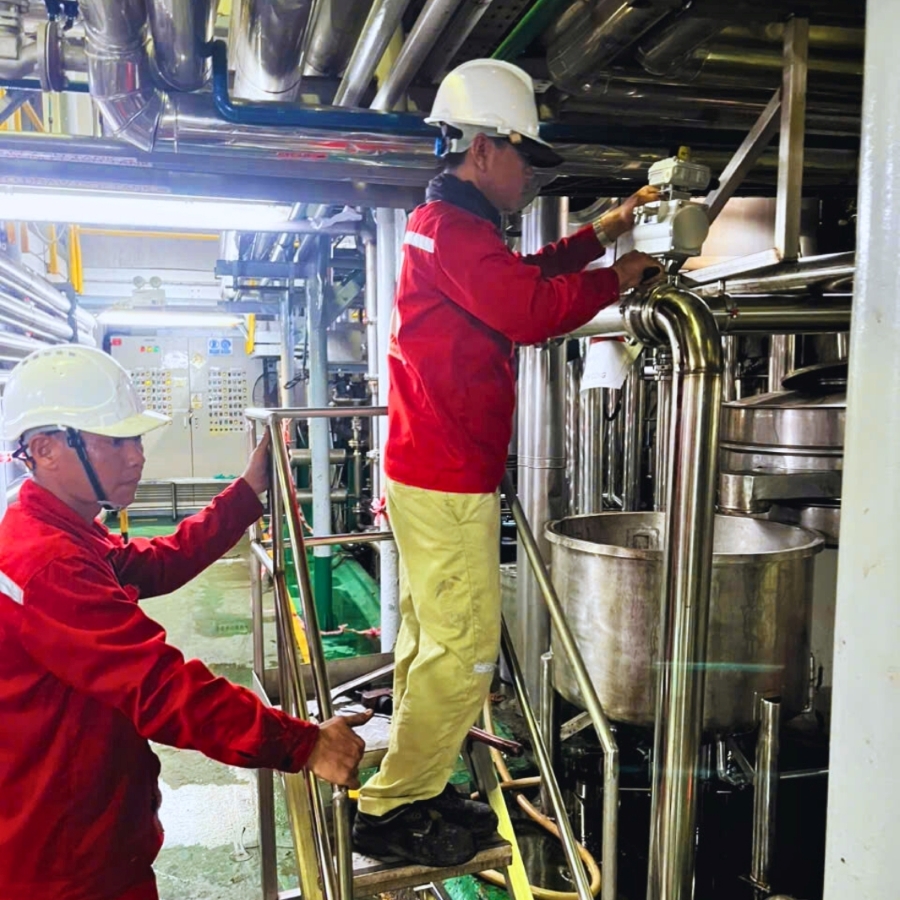
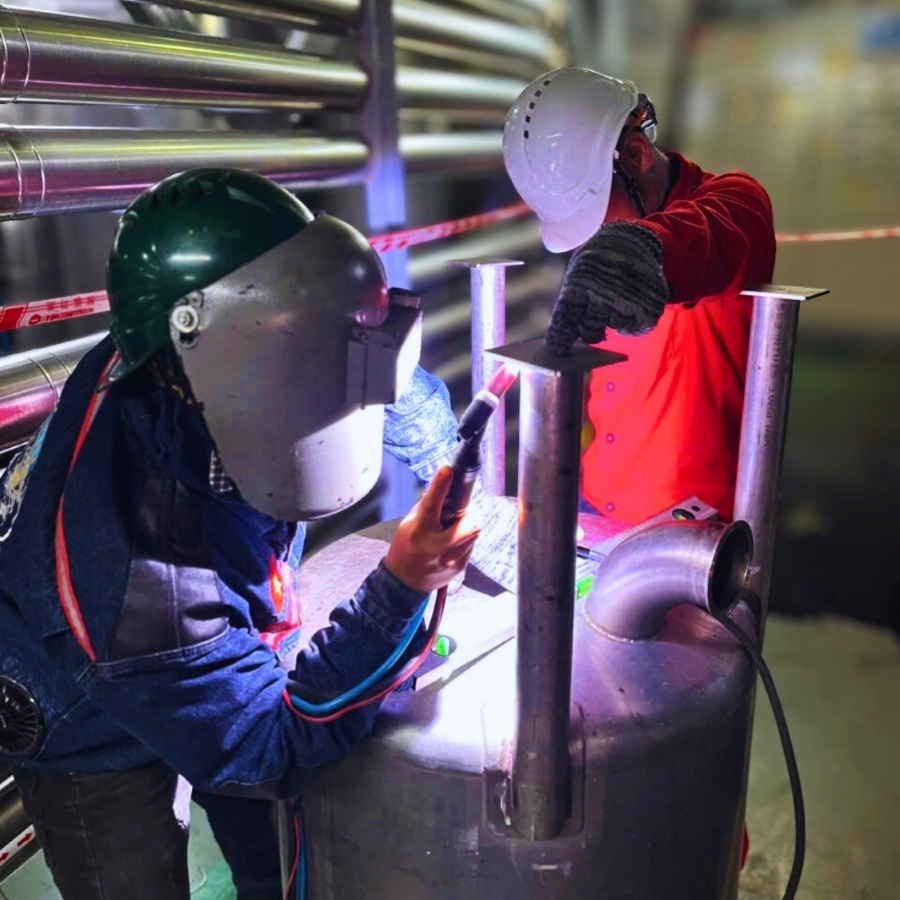
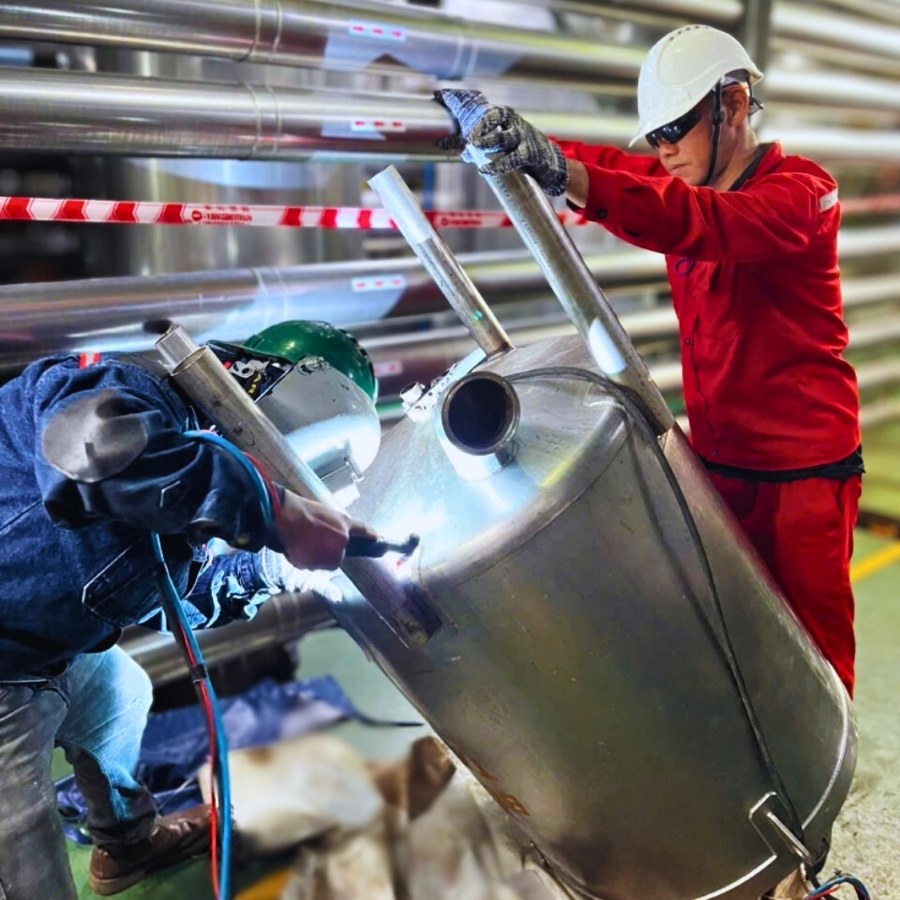
4. Fabrication and installation of an automated stack cap system
One of the highlights of this project was the fabrication and upgrade of the chimney cap system—a component often underestimated but crucial for protecting the plant’s entire ventilation and exhaust infrastructure.
Initial specifications:
- Stack diameter: 1,924 mm
- Original material: Carbon steel
PREBECC’s solution:
- Replaced with SUS 304 stainless steel: This corrosion-resistant material is ideal for outdoor industrial environments, significantly reducing long-term maintenance costs.
- Integrated pneumatic actuator for automated opening/closing: A weather sensor triggers the actuator to close the cap during rain, preventing water ingress into the stack and protecting the exhaust fan, motor, and internal ducting system.
- Precision machining, fully sealed welding, and surface finishing: Ensures airtight performance, corrosion resistance, and long-term operational stability.
Upgrading from a manual to an automated stack cap system is a clear reflection of PREBECC’s commitment to industrial solutions that prioritize automation, efficiency, and long-term durability.
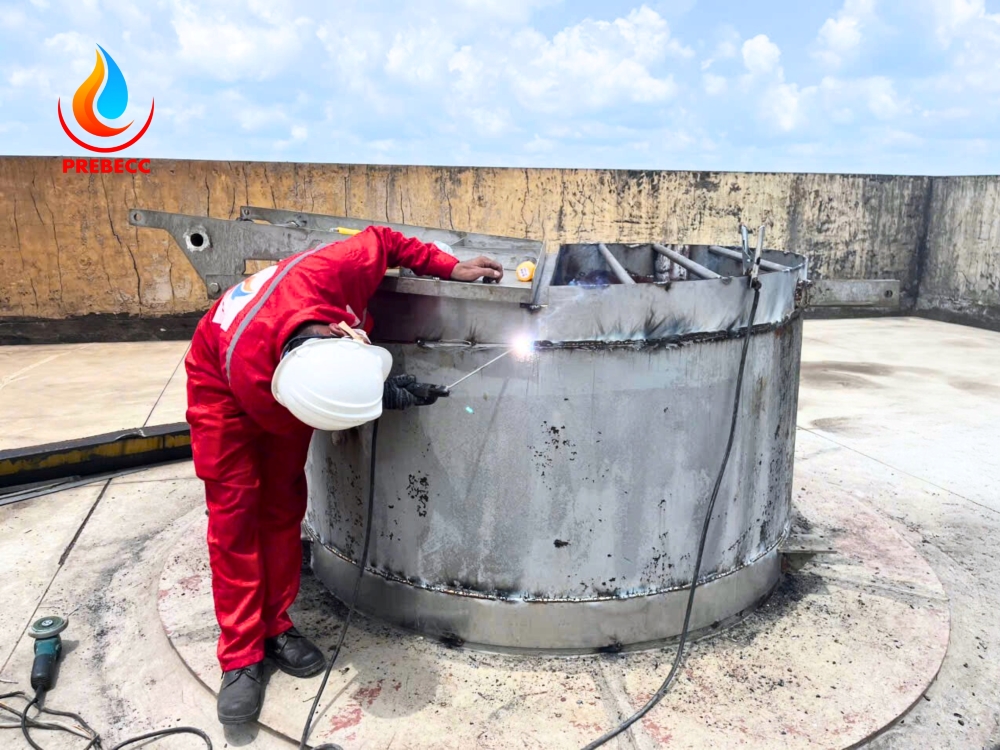
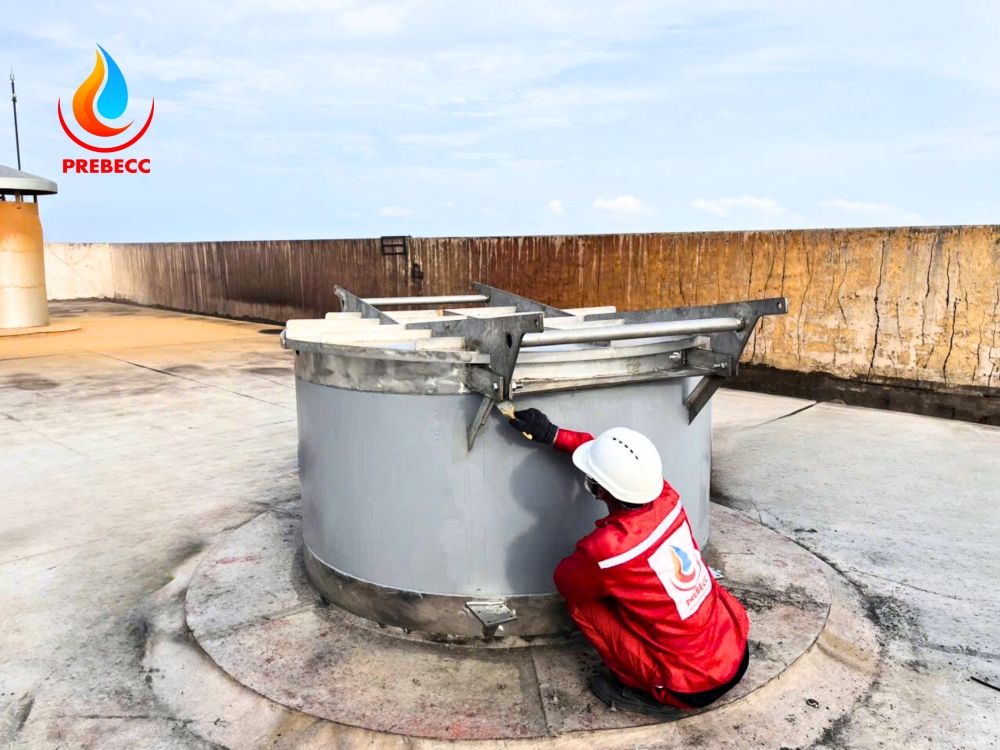
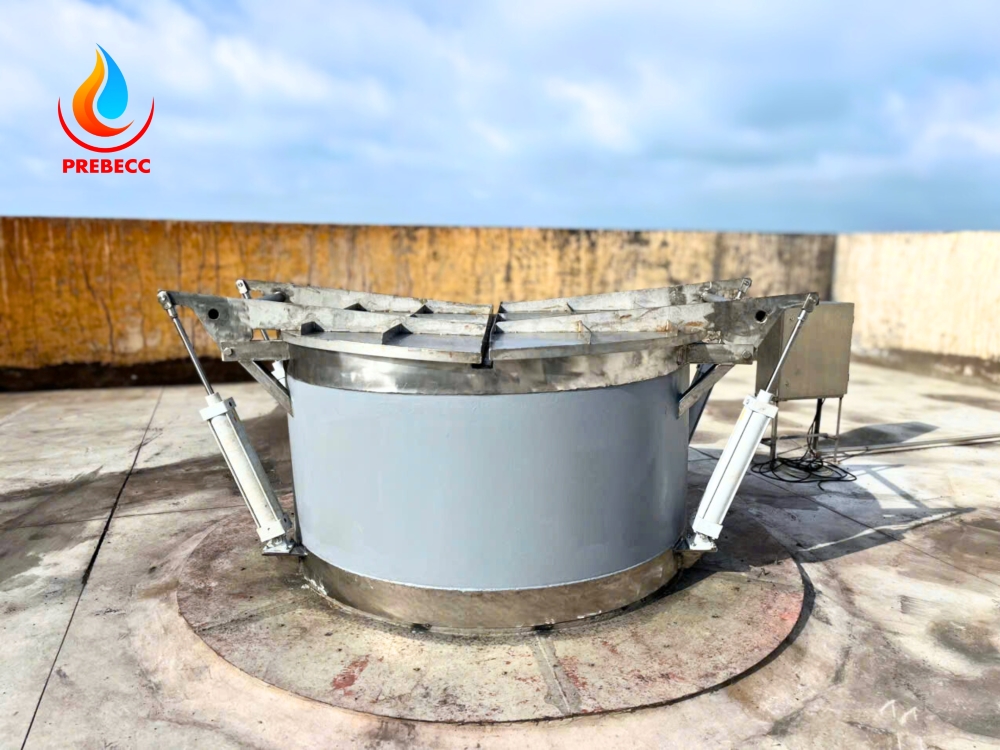
The tank, piping, and auxiliary system maintenance and upgrade project was not simply about extending equipment lifespan. From a broader perspective, PREBECC delivered solutions that:
- Standardized connection systems, aiming for synchronization across the entire production line;
- Enhanced automation levels, reducing reliance on manual operations;
- Optimized operating costs through technically sound, long-term improvements;
- Met industrial hygiene and food safety standards, especially critical in highly regulated environments such as food and pharmaceutical manufacturing.
This project reaffirms PREBECC’s position as a trusted provider of high-standard industrial solutions – not only fulfilling technical requirements but also accompanying clients in their operational transformation journeys, from refining the smallest details to optimizing full-scale systems.
